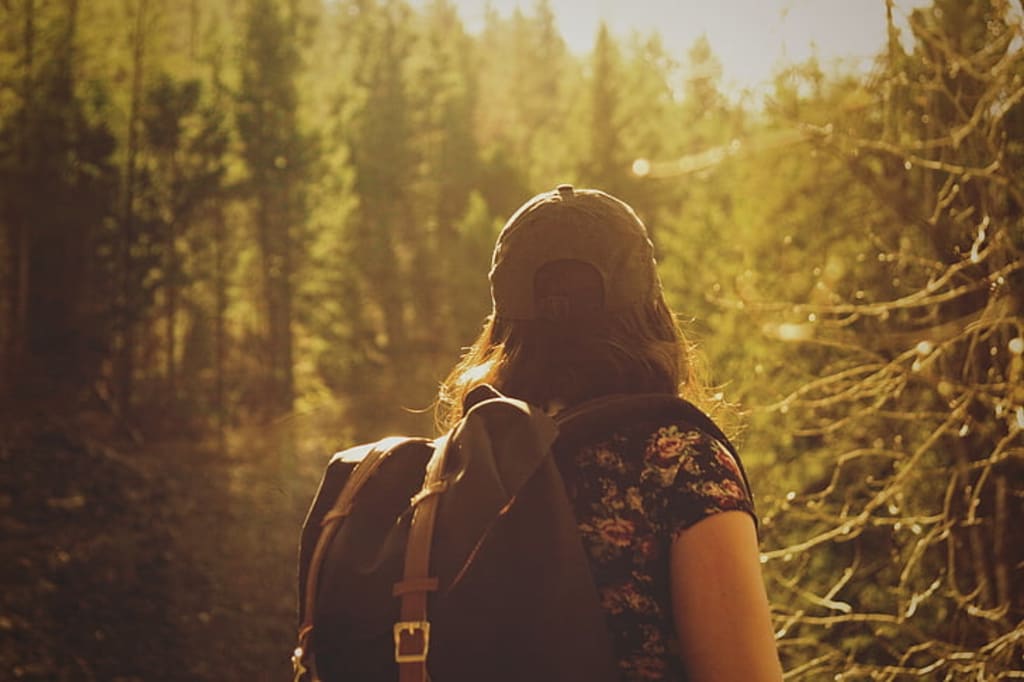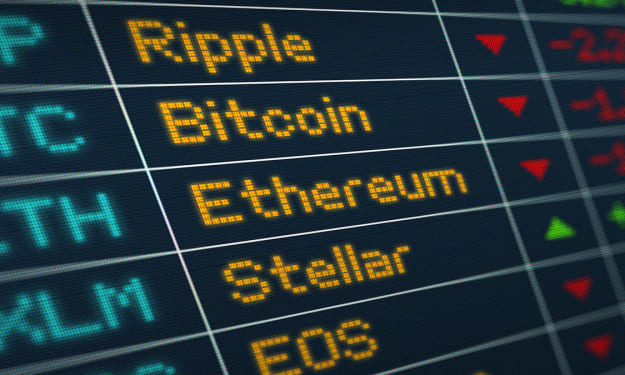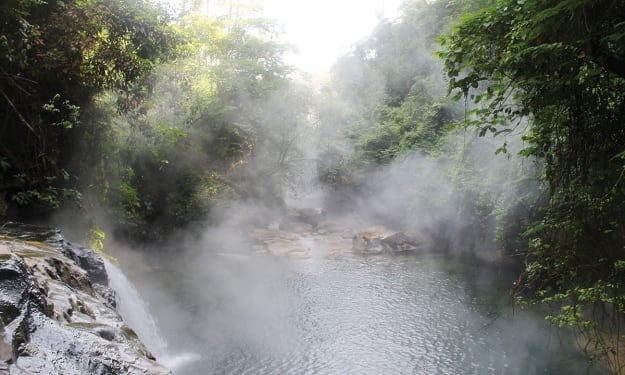From the Dolomites to Denver: Saving the earth, one step at a time.
Composting, separating, growing, creating - all these can help to save a planet on fire.

I have always been aware of the importance of being environmentally conscious, but it wasn't until I went on a hike in the Dolomites that I truly realized the urgent need to take action.
It was a crisp autumn morning when I set out on my hike in the Dolomites. The sun was just starting to peek over the mountains, casting a warm glow over the landscape. I couldn't help but feel a sense of awe as I looked out at the majestic peaks, the vibrant colors of the trees, and the crystal-clear streams.
As I hiked deeper into the mountains, I came across a small waterfall cascading down the rocks. I stopped to take in the beauty of it, the sound of the water rushing past was like music to my ears. I sat there for a while, taking in the tranquility of the moment.
As I continued on my hike, I came across a clearing with a panoramic view of the mountains. I was struck by the vastness of it all, and the fragility of our planet became more apparent. I couldn't help but think about the impact of climate change on this beautiful place. The dry streams, the dying trees, and the scarce wildlife were all signs of the damage we were causing.
It was then that I realized that it was not enough to simply admire the beauty of the earth; we must also take action to protect it. I knew that I needed to do more to reduce my carbon footprint, to support sustainable companies and to make conscious choices that would have a positive impact on the environment.
The hike in the Dolomites was a powerful reminder of the fragility of our planet and the importance of taking action to protect it. It was a celebration of the beauty of the earth, and a call to action to preserve it for future generations.
As I left the mountains and headed back home, I felt a renewed sense of purpose. I knew that I would never look at the earth the same way again, and that I would do everything in my power to protect it.
I started by looking at my own waste and how I could reduce it. I began separating my waste, using reusable materials, and composting. I even got creative with reusing my clothing and found ways to repurpose old items instead of throwing them away.
As I started to make these small changes in my own life, I began to see a big difference. My waste was significantly reduced, and I felt a sense of satisfaction knowing that I was doing my part to combat climate change.
Shopping sustainably
But it wasn't just about reducing my waste. I also started to pay more attention to the products I was buying and the companies I was supporting. I made sure to choose products that were sustainable and made by companies that were committed to protecting the environment.
I learned about the impact of sustainable brands like Patagonia through research and education. I started to read more about the fashion industry and the environmental impact it has. I was shocked to learn about the pollution and waste that is generated by fast fashion and cheap clothing.
I then came across Patagonia, a brand that is known for its commitment to sustainability. They use environmentally friendly materials, have fair labor practices, and invest in environmental causes. By choosing to shop from Patagonia, I knew I was supporting a company that was making a positive impact on the environment.
I also learned that sustainable brands like Patagonia are part of a growing movement of companies that are working to create a more sustainable future. By supporting these brands, I was helping to create a demand for sustainable products, which in turn would encourage more companies to adopt sustainable practices.
I also realized that by shopping sustainable brands, I was making a conscious effort to reduce my carbon footprint. I was consuming less, and the items I was buying were made with environmental standards, which meant they would last longer, reducing the need to buy more clothes. It also made me feel good knowing that I was making a conscious effort to protect the planet and be part of a positive change.
Growing green
Growing a backyard garden is a simple yet powerful way to reduce food miles and fight climate change. Food miles refer to the distance food travels from the farm to your plate. The farther the food travels, the more greenhouse gases are emitted during transportation. By growing your own food in your backyard, you are drastically reducing the distance your food has to travel, thus cutting down on emissions.
I remember when I first decided to start a backyard garden. I was inspired by the idea of growing my own fresh produce and reducing my carbon footprint. I started small, with just a few pots of beets, carrots, and lettuce. It was a lot of work at first, but as I watched my little seedlings grow into healthy plants, I felt a sense of accomplishment.
As the summer went on, I was able to harvest my first crop of beets, carrots, and lettuce. It was a joy to be able to eat food that I had grown myself, knowing that it was organic, fresh and had zero food miles. I also noticed that I was buying fewer groceries and saving money, which was an added bonus.
The benefits of growing a backyard garden go beyond just reducing food miles. By growing your own food, you are also reducing your dependence on industrial agriculture which is a major contributor to climate change. Additionally, gardening also helps to improve soil health, increase biodiversity and it is also a great way to connect with nature.
The experience of growing beets, carrots, and lettuce in my backyard garden was a powerful reminder of how small actions can make a big difference in the fight against climate change. I felt proud of myself for taking a step towards a more sustainable way of living, and I highly recommend it to anyone who wants to make a positive impact on the planet.
Protein Power
Eating alternative proteins such as Impossible and Beyond Meat is an effective way to reduce carbon emissions and make a positive impact on the environment. The production of traditional animal-based proteins, such as beef and pork, generates significant amounts of greenhouse gas emissions. This is because of the large amounts of land, water, and energy needed to raise and transport animals, as well as the emissions from the manure and the fertilizer.
Alternative proteins, on the other hand, are made from plant-based ingredients and produced with significantly fewer resources, which results in lower carbon emissions. In fact, studies have shown that producing plant-based meat alternatives can result in up to 90% fewer greenhouse gas emissions compared to traditional animal-based meats.
Not only do these alternative proteins help to reduce carbon emissions, but they also offer delicious meals such as meat-free tacos, salads and bowls. Impossible and Beyond Meat products are designed to mimic the taste and texture of traditional animal-based meats, making it easy to make a transition to a more sustainable diet.
In addition, eating alternative proteins can also help to reduce water consumption and deforestation, which are both major contributors to climate change. It also can help to reduce the pollution caused by animal farming.
The hike in the Dolomites was a turning point for me. It made me realize that we all have a responsibility to protect our planet, and it doesn't have to be a huge sacrifice. Small changes can make a big difference, and I'm proud to be doing my part. I hope that by sharing my story, I can inspire others to take action as well. Together, we can make a difference.
About the Creator
Enjoyed the story? Support the Creator.
Subscribe for free to receive all their stories in your feed. You could also pledge your support or give them a one-off tip, letting them know you appreciate their work.





Comments
There are no comments for this story
Be the first to respond and start the conversation.